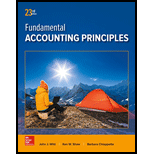
Concept Introduction:
Owner's authority and authorization: A partnership works on the concept of Mutual Agency. As per Mutual agency concept, each partner is principal as well as the agent of another partner; they work for the benefit of partnership firm together. Each partner is the agent of the partnership business and has the ability to take decisions on behalf of the partnership and bound the partnership for the same.
The term “Mutual Agency” is used to define the relationship between the partners in a partnership firm. As per Mutual agency concept, each partner is principal as well as the agent of another partner; they work for the benefit of partnership firm together. Each partner is the agent of the partnership business and has the ability to take decisions on behalf of the partnership and bound the partnership for the same.
To discuss: If partners can limit the right of a partner to commit their partnership to contract and the binding effect of such contracts on the partner’s and on outsiders.
Want to see the full answer?
Check out a sample textbook solution
Chapter 12 Solutions
Fundamental Accounting Principles
- Please provide answer this general accounting questionarrow_forwardPlease given correct answer general accountingarrow_forwardAs of December 31, 2018, Blossom Company has assets of $41,800 and stockholders' equity of $20,400. What are the liabilities for Blossom Company as of December 31, 2018? A. $20,400. B. $41,800. C. $62,200. D. $21,400.arrow_forward
- Kenney Co. uses process costing to account for the production of canned energy drinks. Direct materials are added at the beginning of the process and conversion costs are incurred uniformly throughout the process. Equivalent units have been calculated to be 19,200 units for materials and 16,000 units for conversion costs. Beginning inventory consisted of $11,200 in materials and $6,400 in conversion costs. April costs were $57,600 for materials and $64,000 for conversion costs. The ending inventory still in process was 6,400 units (100% complete for materials, 50% for conversion). The cost per equivalent unit for materials using the weighted average method would be: a. $0.9167 b. $3.0000 c. $3.5833 d. $7.2500arrow_forwardGeneral accountingarrow_forwardDon't use ai given answer accounting questionsarrow_forward
- The difference between the actual fixed manufacturing overhead cost and the budgeted fixed manufacturing overhead cost is the: a. fixed overhead spending variance. b. fixed overhead volume variance. c. fixed overhead rate variance. d. fixed overhead efficiency variance.arrow_forwardRelative sales value? General accountingarrow_forwardGet correct solution for this following requirements on these general accounting questionarrow_forward
- Please provide correct answer this general accounting questionarrow_forwardOn January 1, 2024, Wright Transport sold four school buses to the Elmira School District. In exchange for the buses, Wright received a note requiring payment of $532,000 by Elmira on December 31, 2026. The effective interest rate is 8%. Note: Use appropriate factor(s) from the tables provided. (FV of $1, PV of $1, FVA of $1, PVA of $1, FVAD of $1 and PVAD of $1) Required: How much sales revenue would Wright recognize on January 1, 2024, for this transaction? Prepare journal entries to record the sale of merchandise on January 1, 2024 (omit any entry that might be required for the cost of the goods sold), the December 31, 2024, interest accrual, the December 31, 2025, interest accrual, and receipt of payment of the note on December 31, 2026.arrow_forwardWesson Company is a consulting firm. The firm expects to have $45,000 in indirect costs during the year and bill customers for 6,000 hours. The cost of direct labor is $75 per hour. Calculate the predetermined overhead allocation rate for Wesson.arrow_forward

 AccountingAccountingISBN:9781337272094Author:WARREN, Carl S., Reeve, James M., Duchac, Jonathan E.Publisher:Cengage Learning,
AccountingAccountingISBN:9781337272094Author:WARREN, Carl S., Reeve, James M., Duchac, Jonathan E.Publisher:Cengage Learning, Accounting Information SystemsAccountingISBN:9781337619202Author:Hall, James A.Publisher:Cengage Learning,
Accounting Information SystemsAccountingISBN:9781337619202Author:Hall, James A.Publisher:Cengage Learning, Horngren's Cost Accounting: A Managerial Emphasis...AccountingISBN:9780134475585Author:Srikant M. Datar, Madhav V. RajanPublisher:PEARSON
Horngren's Cost Accounting: A Managerial Emphasis...AccountingISBN:9780134475585Author:Srikant M. Datar, Madhav V. RajanPublisher:PEARSON Intermediate AccountingAccountingISBN:9781259722660Author:J. David Spiceland, Mark W. Nelson, Wayne M ThomasPublisher:McGraw-Hill Education
Intermediate AccountingAccountingISBN:9781259722660Author:J. David Spiceland, Mark W. Nelson, Wayne M ThomasPublisher:McGraw-Hill Education Financial and Managerial AccountingAccountingISBN:9781259726705Author:John J Wild, Ken W. Shaw, Barbara Chiappetta Fundamental Accounting PrinciplesPublisher:McGraw-Hill Education
Financial and Managerial AccountingAccountingISBN:9781259726705Author:John J Wild, Ken W. Shaw, Barbara Chiappetta Fundamental Accounting PrinciplesPublisher:McGraw-Hill Education





